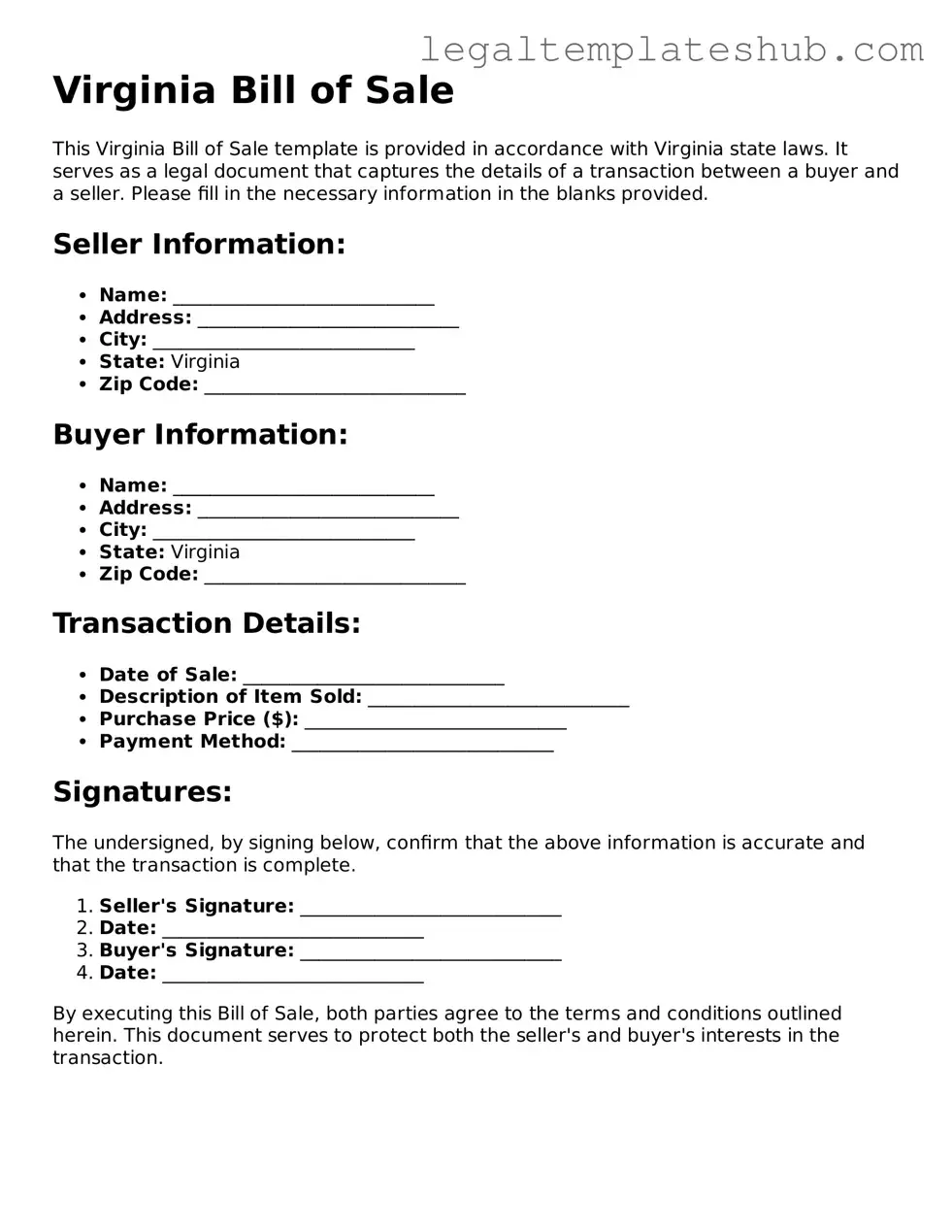Instructions on Filling in Virginia Bill of Sale
Completing the Virginia Bill of Sale form is a straightforward process that requires careful attention to detail. Once you have the form ready, you can move forward with finalizing your transaction. Here are the steps to guide you through filling out the form correctly.
- Begin by entering the date of the sale at the top of the form. This is the date when the transaction takes place.
- Next, provide the full name and address of the seller. Ensure that the information is accurate to avoid any future complications.
- Following that, enter the buyer's full name and address. Like the seller's information, this must be correct and complete.
- In the section for the item description, clearly describe the item being sold. Include details such as make, model, year, and any identifying numbers (like VIN for vehicles).
- Specify the sale price of the item. This should be the total amount agreed upon by both parties.
- If applicable, indicate any warranties or guarantees associated with the sale. Be clear about what is included and any limitations.
- Both the seller and buyer should sign and date the form at the bottom. This signifies that both parties agree to the terms outlined in the Bill of Sale.
After completing the form, ensure that both parties keep a copy for their records. This document serves as proof of the transaction and can be important for future reference.
